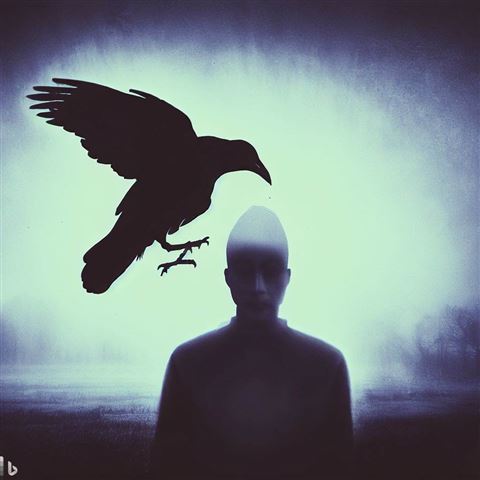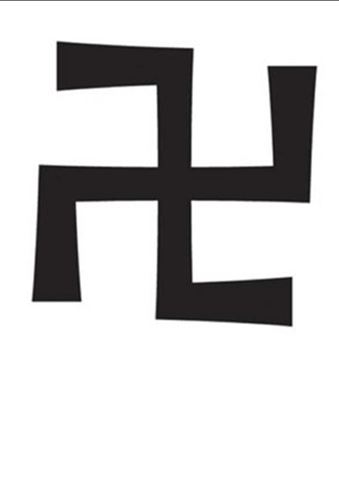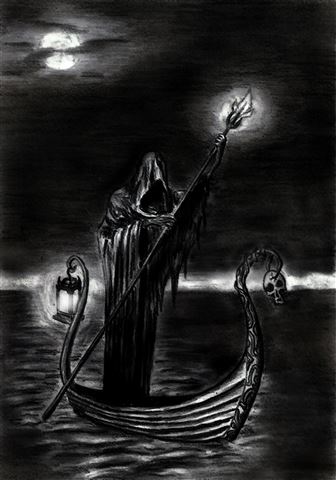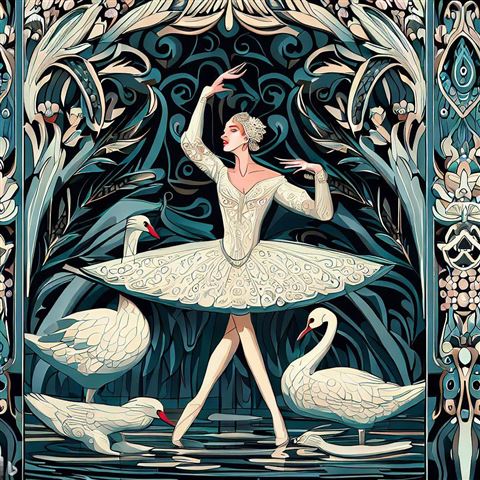Symbolism is readily used in poetry. In jueju poetry, symbolism is encouraged and it serves to juxtapose the observable environment (objective) with the emotional response (subjective). Symbolic language is the tool of the modern haiku poet.
ravens smudge the sky …
eyes averted from feelings
frozen in sorrow
Symbolism is not to be confused with metaphor which is a direct relationship where one thing or idea substitutes for another. Symbolism is the use of specific objects or images to represent abstract ideas. A symbol must be something tangible or visible, while the idea it symbolises must be something abstract or universal. For example, although the raven is often associated with loss and ill omen, its symbolism is complex; it also represents prophecy and insight. Ravens in stories often act as psychopomps, connecting the material world with the world of spirits.

Ever restless spirit manifests and merits
the portent that’s even denounced by the raven.
Symbolism is the practice of representing things by symbols, or of investing things with a symbolic meaning or character, whereas superstition is an irrational belief in or notion of the ominous significance of a particular thing, circumstance, or occurrence.
In the following poem I employed the literal and figurative symbolism of sigils to express my frustration with the current world affairs orchestrated by politicians. This sigil (a seal or a symbol) represents humankind’s power in working magic. The eye symbolises vision while the hand represents the power of shaping.
eye and hand sigil—
impotent against the greed
of politicians
In the following poem I allude to the Japanese superstition that by placing the cast-off skin of a snake in ones wallet would invite monetary fortune.
cast slough of snake—
placed in worn wallet to
bring good fortune
A myth is a type of symbolic storytelling that was never based on fact. Many myths and legends contain morals and supposed truths about bravery, goodness, cowardice, and evil. In contrast, a legend is presumed to have some basis in historic fact and tends to mention real people or events. Historic fact morphs into a legend when the truth has been exaggerated to the point that real people or events have taken on a romanticised ‘larger than life’ quality.

This symbol can be seen carved upon numerous stone structures in New Mexico and Arizona. This is where the Hopi hailed from and believed the swastika symbol meaning dealt with their origin and ultimate destination of their clans. The centre cross is symbolic of TuwanasaviI, this is the centre of the world. It is also considered the centre of the Hopi soul. Legend states that the first Hopi clans were at the centre of the world, and centred within their souls. With assistance from Spirit, the four clans were guided in a certain direction: North, South, East, and West. After travelling out (from the centre cross) both physically and spiritually, each clan turned left, which is symbolic of turning towards the earth. Other clans were guided to turn right, which was a migration towards the sun.

This swastika symbol meaning deals with paths taken in the afterlife. It was a symbol commonly found on Scandinavian grave sites. Symbolism is often found in ceremonies, for example, in Hinduism and Buddhism, the swastika, also known as sauvastika, is not only a religious symbol in these cultures, it is also considered a lucky symbol; the fylfot started its life as a Pagan sun wheel symbol; Brigid’s cross, also known as a sun-wheel, were customarily hung in the home as a symbol of protection; the Norse rune represents the journey through afterlife with the goal of returning back to mother earth (or mother sea in some accounts); et cetera.

In many instances, symbolism has its roots in mythology. Mythology of different cultures is rich for the picking to enhance the poet’s work and it lends quick shorthand to describe something in a succinct manner.
THROUGH THE KEYHOLE
[An extract]
Unpleasant facts I spat out like an obol
that’s placed under tongue of recently deceased.
The critics can wait with Charon for day of
reckoning—future set aside for visions.
My dreams swim at the edge of river’s conscience.
The association between Hermes and the underworld is related to his function as a god of boundaries (the boundary between life and death), but he is considered a psychopomp, a deity who helps guide souls of the deceased to the afterlife, and his image was commonly depicted on gravestones in classical Greece. Hermes was the Greek god of commerce, thieves, and athletes. Famously, he was also the messenger of the gods – and this job required the fleet-footed Hermes to be able to traverse between worlds with ease, which probably explains why he’s also the god of border crossings. It was also his job to lead the souls of the dead to the entrance of Hades, where they waited for Charon to pick them up. Hermes was the only Olympian god able to visit Heaven, Earth, and Hades – a fact he enjoyed bragging about to the other gods. Some of his most famous transported souls included the suitors of Odysseus’ wife Penelope, who were killed when the hero finally returned from Troy.
Charon is the ferryman who, after receiving a soul from Hermes, would guide them across the rivers Styx and/or Acheron to the underworld. At funerals, the deceased traditionally had an obol (an ancient Greek coin worth one sixth of a drachma) placed over their eye or under their tongue, so they could pay Charon to take them across the river.

FAIR PLAY
Fair play didn’t quite feature
when reason absconded;
war and peace polarised.
When their ideals clash,
men rip, tear
hair by roots.
Didn’t they care
rare courage
found in lair?
The symbolic meaning might only be intelligible to a certain group of people, for example, the ballet, Swan Lake, written by Tchaikovsky in 1875–1876. The Russian people understand the significance of it as it has been used in its various forms since its inception to herald changes in their country, for example, the Russian Revolution, as well as alluding to the very question of war and peace.
As poets who publish work on the international stage, it is imperative that one should be sensitive to the various different interpretations of symbols/symbolism. A case in point is the swastika (see above), a blanket word for four-armed or four-angled symbols. It teaches a symbolic lesson that just because a symbol has gotten a bad reputation (such as Nazi German swastika), that doesn’t mean the symbol had always stood for a maligned concept, and one symbol almost never has one single meaning.
© Suzette Richards 2023. All images (except the swastikas) were generated via my prompts to the DALL-E 2, the AI imaging software, and their logo is thus appended bottom left on the respective pictures.